Night flames tore through city's finest landmark
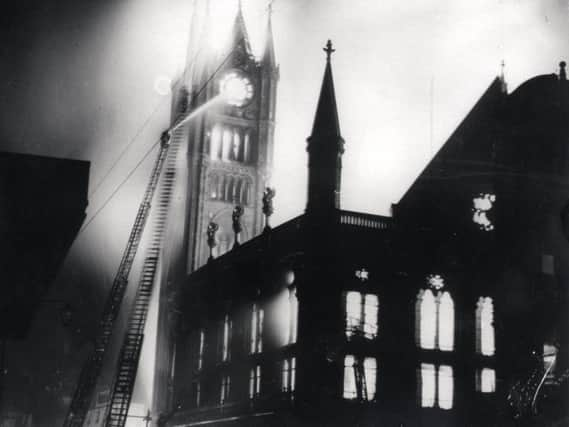

On the bitterly cold morning of Saturday, March 15, 1947 the residents of Preston awoke from their slumbers to news that their stately Gothic design Town Hall on Fishergate had been reduced to a smouldering ruin.
Fire had raged for three hours from 3am and had swept through the entire building. The old Guild Hall had been completely gutted and the cherished clock tower had crashed 180 feet into Fishergate.
Advertisement
Hide AdAdvertisement
Hide AdThe alarm was raised by Ernest Jackson, a delivery driver employed by the Lancashire Daily Post, who was living above a shop on Cheapside who was awakened by the sound of crackling and the glow of the blaze lit up his apartment.
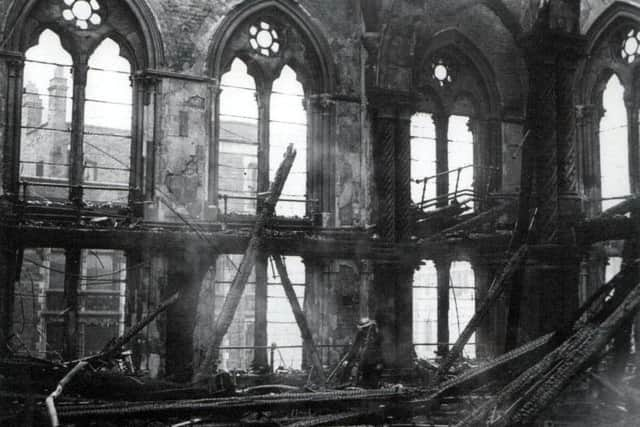

Town Hall caretaker Mr Freeman, along with his wife and son, were asleep in a upper floor apartment as the fire raged and only woken by a telephone call from the fire station. They escaped the inferno by crawling through dense smoke on their hands and knees.
Fire fighting operations were still in the hands of the wartime National Fire Service, and within minutes of the alarm being raised upwards of 80 firefighters and all available fire engines from Preston and the surrounding districts were at the scene.
In the Arctic-like conditions, firemen on turntable ladders battled to contain the roaring inferno which lit up the darkened streets. Some of the turntable mechanisms failed to operate in the freezing weather and it was said that as the water from the hoses hit against the stone walls of the Town Hall it froze into gigantic icicles. There was a lucky escape for a number of firefighters, when the top of the clock tower spire crashed to the ground at a spot where only seconds before they had been controlling a hose.
Advertisement
Hide AdAdvertisement
Hide AdTons of debris from the clock tower tumbled down into Fishergate narrowly missing the shops on the other side of the road.
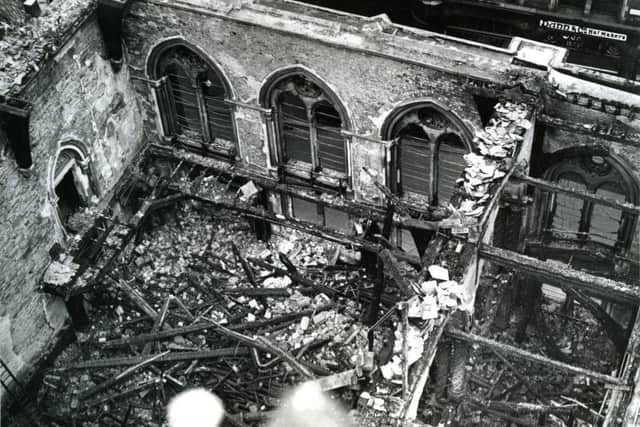

As the fire raged through the tower, the Town Hall clock stopped at 3.45 am exactly and the 4.75 ton bell was hit in succession by falling timbers and stonework. The mournful tones echoing across the town as though the building was sounding its own death knell. The bell then crashed down the inside of the tower and became lodged halfway down.
By dawn the blackened, roofless Town Hall stood as a sad, gaunt site against the morning sky. Only rooms on the ground floor, including the council chamber, were saved from the inferno and the 80 year old building was a smouldering ruin. As shop and office workers arrived in town for work they found the streets around the Town Hall barricaded off for safety. Throughout the day people flocked into town to gaze at the blackened remains of the historic building which had been opened in October, 1867 by HRH Duke of Cambridge. The building cost £70,000 to build and had been the focal point of civic life.
The last function before the disastrous fire was a prize distribution ceremony for Fishwick Secondary School.
Advertisement
Hide AdAdvertisement
Hide AdGuests had left the premises shortly after 4pm on the previous day. A report handed to the town council in late July 1947 by Dr Forth, of the North West Forensic Laboratory, found no evidence of arson and concluded that the true cause of the fire would remain unknown.
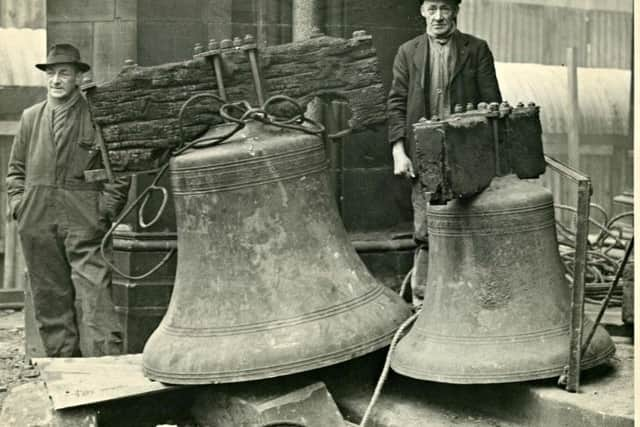

The day after the fire workmen began demolishing the remains of the clock tower and the building was patched up to allow partial use of the ground floor.
Initially, the clamour was for the building to be rebuilt and restored to its former glory. But as time dragged on interest in the idea cooled and eventually the town council decided to knock it down and lease the prime site to the highest bidder. And in 1962 demolition gangs moved in and the final destruction of Preston Town Hall was completed.
Great interest was aroused when a number of historical items were discovered in the building’s foundations. They had been placed beneath a 15 cwt stone in the north east corner of the hall’s clock tower in September 1862 by the Guild Mayor Robert Townley Parker.
Advertisement
Hide AdAdvertisement
Hide AdNeither he, nor his contemporaries, could have thought they would be unearthed within a century. These Victorian keepsakes, consisting of a sealed golden casket and a bottle of valuable coins and curiosities, were lifted out of the foundations and taken to the Mayor’s parlour in the Municipal Buildings on Lancaster Road.
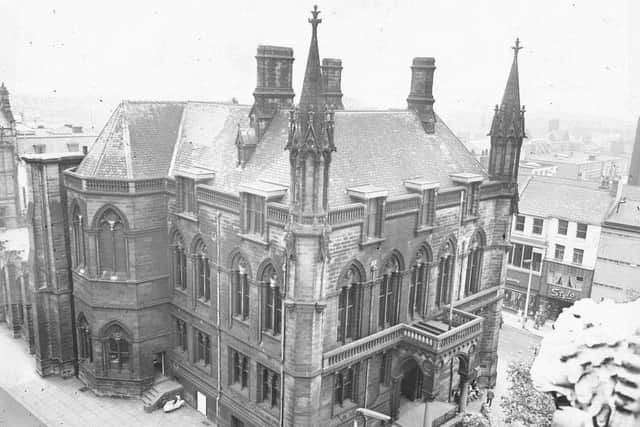

The Mayor of Preston Coun Fred Irvine broke the town’s seal on the casket and opened it to reveal century old newspapers, each tied with blue and pink ribbons, and a magnificent parchment scroll recording the names of the civic leaders in the 1862 Guild Year. There were also newly minted guinea pieces, florins, silver, gold and copper coins. Once cleared, the site was sold to developers who constructed the Crystal House shopping and office block. Preston was then left without a town hall and in 1971 the town council decided to change the name of the Municipal Buildings to that of Town Hall.
Many Prestonians were sad to say goodbye to their much cherished old town hall, with its clock tower and weather vane aloft.
That same plot of land had been the site of a Town and Guild Hall structure erected in 1782. This brick building (pictured inset) with its handsome free stone Cupola added in 1814, had once been the pride of the town as well. Alas, its days were also numbered as the town rulers of the 19th century deemed it no longer gracious enough for a growing town. It was demolished in September 1860.
That town hall had been itself been erected to replace an earlier Town or Moot Hall which collapsed in June 1780.